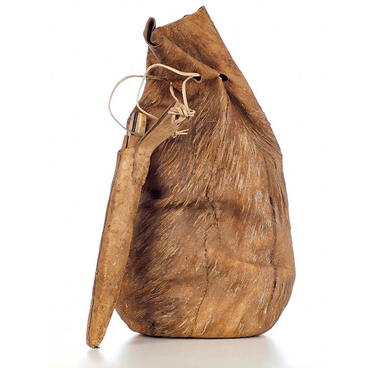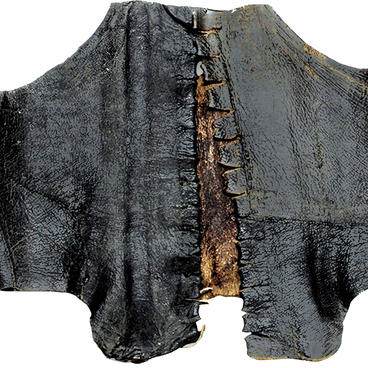The bench for playing the Labyrinth (G’und-g’und-q’al) game is one of the most precious and interesting pieces in the National Museum of Adyghe Republic. Only one bench of this type has survived until now.
This game was designed for developing strategic thinking. Its rules were simple: two adversaries sat at each side of the bench. One of them attacked, and the other had to defend his fortress, the game space. The fans watched the battle standing around the bench. Both players held special sticks with a cone-shaped end like that of a pointer. Inside the playing field, one stick moved towards the other, and if the chief of defense met the enemy on his way, the attack on the fortress was considered to be repelled. But if the invader reached the center of the field without clashing with the adversary, it meant that he managed to capture the fortress.
Various military games were an integral part of almost all Adyghe traditional festivities, even weddings or funeral banquets. Not only did those games allow young men to show their talents, but also helped them to practice many of the tactical maneuvers used during military operations.
The authors of works dedicated to the Adyghe way of life and culture pointed out that the amusements of those people, even the dances, had a military character to them.
This game was designed for developing strategic thinking. Its rules were simple: two adversaries sat at each side of the bench. One of them attacked, and the other had to defend his fortress, the game space. The fans watched the battle standing around the bench. Both players held special sticks with a cone-shaped end like that of a pointer. Inside the playing field, one stick moved towards the other, and if the chief of defense met the enemy on his way, the attack on the fortress was considered to be repelled. But if the invader reached the center of the field without clashing with the adversary, it meant that he managed to capture the fortress.
Various military games were an integral part of almost all Adyghe traditional festivities, even weddings or funeral banquets. Not only did those games allow young men to show their talents, but also helped them to practice many of the tactical maneuvers used during military operations.
The authors of works dedicated to the Adyghe way of life and culture pointed out that the amusements of those people, even the dances, had a military character to them.



